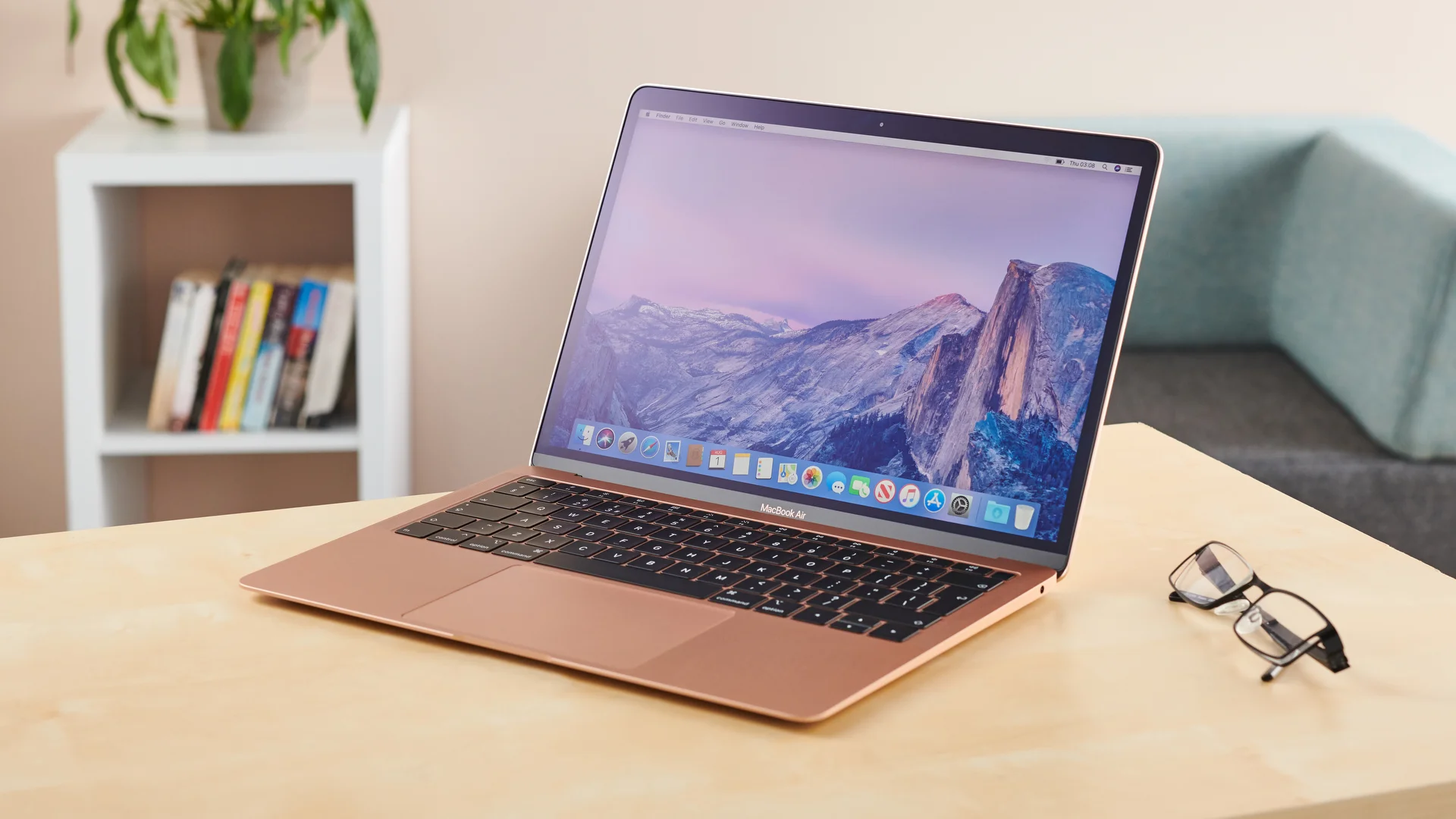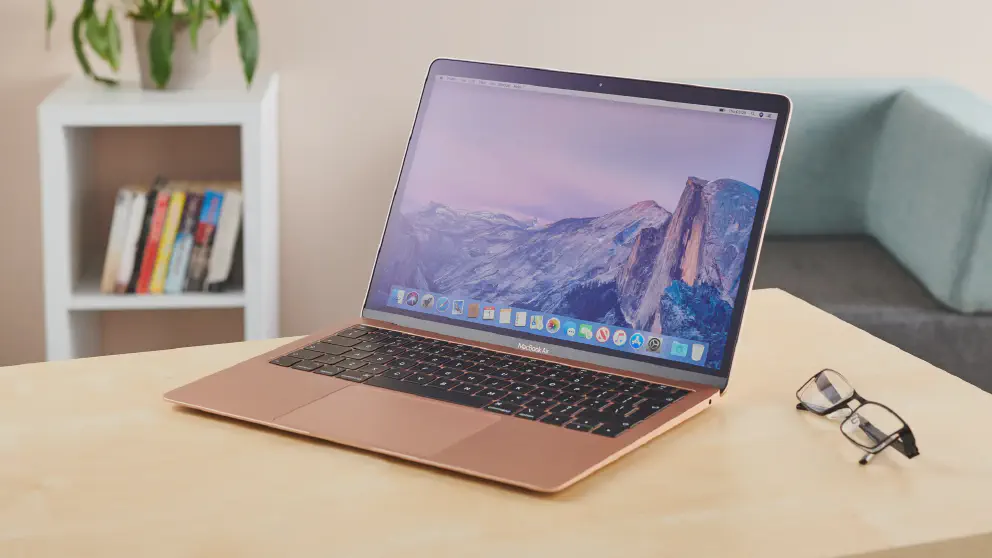
The definitive default laptop from Apple. It also the default laptop for many. It’s one of the best selling laptops of all time. Everyone is using it, from students to tycoons. You can build and manage an empire from this machine and with the M1 chip which kick off the Apple Silicon revolution, it’s more capable than ever.
With so much improvement on this version versus the previous one that is using Intel chip, it’s hard to say no to this.
What it is?
Apple baseline laptop for peole who needs a laptop. The newest version comes with the M1 chip which kick-off Apple transition away from Intel CPUs to Apple Silicon. The iconic wedge shape and light weight makes it easy to carry around to lecture hall to board meetings.
New Features
Fanless design To show how good the thermal management of the new CPU, this ultra portable does not have any fans. So the only moving part of the laptop is the keyboard, haptic engine for the mouse fell (which can be turned off) and the hinge.
New screen The screen has a better color rendition, which runs the P3 color space. Other than that, the brightness level is pretty much like the previous version at 400 nits.
USB4 The ports has been upgraded to USB4 port. Intel has decided to license their Thunderbolt technology royalty free, so USB4 is essentially Thunderbolt 4. But that sometimes can be confusing.
Better WiFi The WiFi has been upgraded to WiFi 6 with theoretical bandwidth of around 11 GB/s
Better Battery The battery didn’t change at all. But because of the M1 chip, the battery life has been extended for a few more hours.
Base Features
Most other features are identical like the previous Intel MacBook Air.
Touch ID Use your fingerprint to unlock your Mac. If you have your Apple Watch with you, you can unlock using that too.
Scissor Keyboard Keyboard that is actually comfortable to use instead of the weird butterfly keyboard.
Tech Specs
Display
- Retina display
- 13.3-inch (diagonal) LED-backlit display with IPS technology; 2560-by-1600 native resolution at 227 pixels per inch with support for millions of colors
- 400 nits brightness
- Wide color (P3)
- True Tone technology
Chip
- Apple M1 chip
- 8-core CPU with 4 performance cores and 4 efficiency cores
- Up to 8-core GPU
- 16-core Neural Engine
Battery and Power
- Up to 15 hours wireless web
- Up to 18 hours Apple TV app movie playback
- Built-in 49.9‑watt‑hour lithium‑polymer battery
- 30W USB-C Power Adapter
Charging and Expansion
- Two Thunderbolt / USB 4 ports with support for:
- Charging
- DisplayPort
- Thunderbolt 3 (up to 40Gb/s)
- USB 3.1 Gen 2 (up to 10Gb/s)
- Headphone Thunderbolt / USB 4
Memory
- Up to 16GB unified memory
Storage
- 256, 512, 1024 or 2048 GB
Keyboard and Trackpad
- Backlit Magic Keyboard with:
- 78 (U.S.) or 79 (ISO) keys including 12 function keys and 4 arrow keys in an inverted-T arrangement
- Ambient light sensor
- Force Touch trackpad for precise cursor control and pressure-sensing capabilities; enables Force clicks, accelerators, pressure-sensitive drawing, and Multi-Touch gestures
Touch ID
Touch ID sensor
Wireless
- Wi-Fi
- 802.11ax Wi-Fi 6 wireless networking
- IEEE 802.11a/b/g/n/ac compatible
- Bluetooth
- Bluetooth 5.0 wireless technology
Camera
- 720p FaceTime HD camera
Video Support
Simultaneously supports full native resolution on the built-in display at millions of colors and:
- One external display with up to 6K resolution at 60Hz
Thunderbolt 3 digital video output
- Native DisplayPort output over USB-C
- VGA, HDMI, DVI, and Thunderbolt 2 output supported using adapters (sold separately)
Audio
- Stereo speakers
- Wide stereo sound
- Support for Dolby Atmos playback
- Three-mic array with directional beamforming
- 3.5 mm headphone jack
Dimensions and Weight
- Height: 0.16–0.63 inch (0.41–1.61 cm)
- Width: 11.97 inches (30.41 cm)
- Depth: 8.36 inches (21.24 cm)
- Weight: 2.8 pounds (1.29 kg)3
It is worth it?
For those who just bought the Intel MacBook Air, I feel sorry for them since this is an actual upgrade from the previous version. Everything is just snappier and faster. You don’t worry about thermal throttle because it does use power at all. And the CPU sips the battery so much that you would mistaken to think that they found new battery technology.
For yes, for the default laptop category, this is an absolute win.
Where to buy it?
Amazon Affiliate Page
- MacBook Air M1 - Buy at Amazon
- MacBook Pro M1 13" - Buy at Amazon
- Macbook Pro 16" - Buy at Amazon
